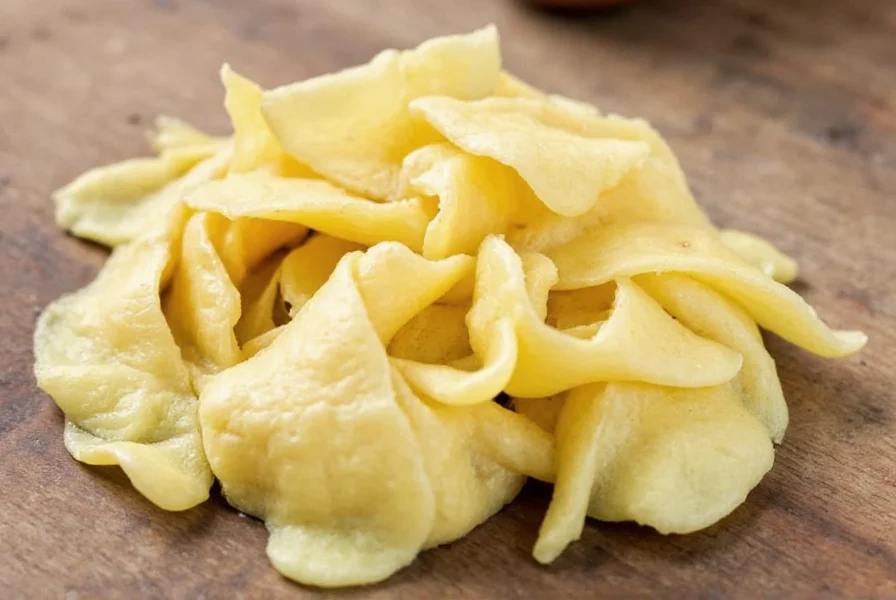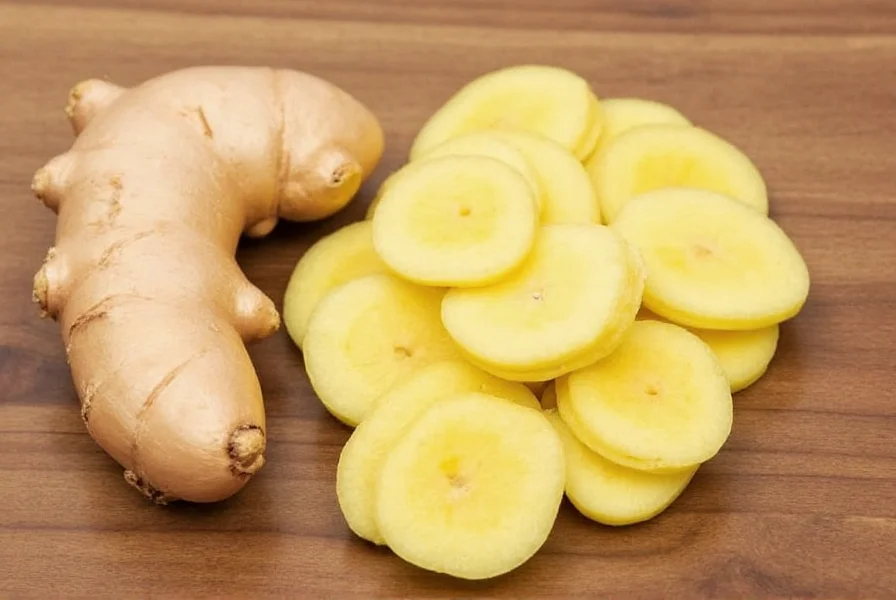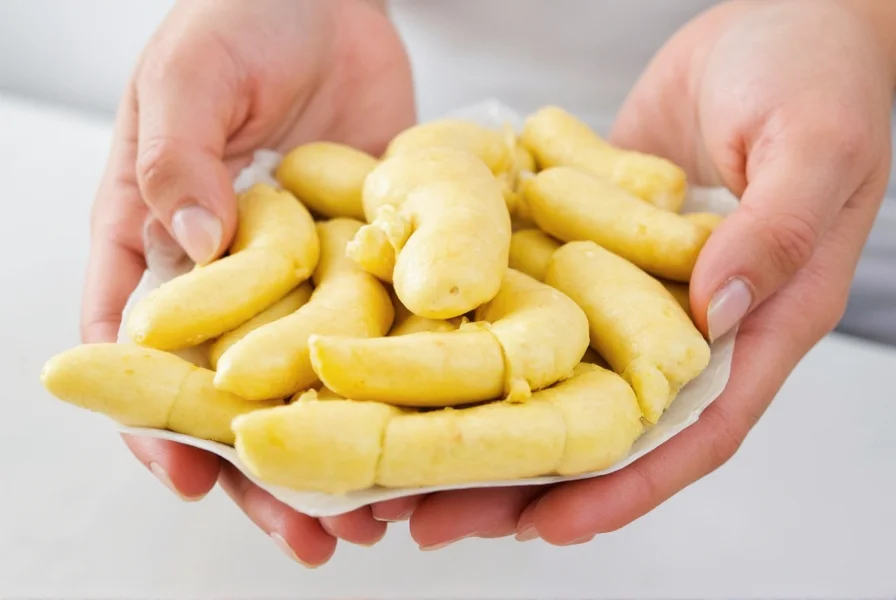Freezing ginger root is not only possible but highly recommended for home cooks and professional chefs alike. This preservation method outperforms refrigeration and drying in maintaining ginger's pungent flavor, aromatic compounds, and beneficial compounds like gingerol. Unlike other preservation techniques that require added sugars or vinegars, freezing preserves ginger in its purest form without altering its chemical composition.
Why Freezing Is the Best Preservation Method for Ginger
Ginger root contains volatile compounds that degrade quickly at room temperature. When properly frozen, these compounds remain stable for extended periods. The cellular structure of ginger withstands freezing temperatures better than many other root vegetables, which explains why frozen ginger maintains its quality so well.
Research shows that frozen ginger retains approximately 95% of its gingerol content—the primary bioactive compound responsible for ginger's health benefits and distinctive flavor—when stored properly for up to six months. This compares favorably to refrigerated ginger, which typically loses significant potency after just two weeks.
Four Effective Methods for Freezing Ginger Root
Depending on how you typically use ginger in your cooking, different freezing methods offer distinct advantages. Here's how to implement each technique:
1. Freezing Whole Unpeeled Ginger
This method works best if you use ginger in larger quantities or for making teas and broths. Simply place unpeeled ginger rhizomes in airtight freezer bags, removing as much air as possible before sealing. This approach preserves ginger for up to six months with minimal flavor loss.

2. Peeled and Sliced Freezing Technique
For more convenient cooking applications, peel the ginger first, then slice it into 1/4-inch thick pieces. Arrange slices in a single layer on a parchment-lined baking sheet and freeze until solid (about 2 hours). Transfer the frozen slices to freezer bags, labeled with the date. This flash-freezing method prevents slices from sticking together.
3. Grated Ginger in Ice Cube Trays
This approach is ideal for recipes requiring precise ginger measurements. Grate peeled ginger using a microplane, then portion into ice cube trays (about 1 tablespoon per cube). Cover with plastic wrap and freeze solid before transferring cubes to freezer bags. Each cube equals approximately one teaspoon of fresh ginger.
4. Ginger Paste Preservation
For maximum convenience, blend peeled ginger with a small amount of water to create a paste. Freeze in silicone molds or small containers. This method works particularly well for marinades and sauces where texture matters less than flavor infusion.
Storage Duration and Quality Considerations
When properly frozen, ginger maintains optimal quality for different durations depending on the method:
| Freezing Method | Optimal Storage Duration | Quality Preservation |
|---|---|---|
| Whole unpeeled | 5-6 months | 90-95% flavor retention |
| Peeled slices | 4-5 months | 85-90% flavor retention |
| Grated (ice cubes) | 3-4 months | 80-85% flavor retention |
| Ginger paste | 2-3 months | 75-80% flavor retention |
Freezer burn appears as dry, discolored spots on frozen ginger. While not harmful, it indicates flavor and texture degradation. To prevent freezer burn, ensure all air is removed from storage containers and maintain a consistent freezer temperature below 0°F (-18°C).
Using Frozen Ginger in Cooking
One of the greatest advantages of frozen ginger is that you can grate it directly from the freezer without thawing. The frozen state actually makes grating easier, as the cold temperature firms up the ginger's fibers. Simply run a microplane grater over the frozen piece—no need to peel first, as the peel separates during grating.
Frozen ginger works exceptionally well in:
- Stir-fries and sautés (add directly to hot oil)
- Smoothies and juices (blends more completely when frozen)
- Baking applications (measured precisely from frozen cubes)
- Teas and infusions (whole frozen pieces release flavor gradually)
For soups, stews, and braises, add frozen ginger slices directly to the cooking liquid. The gradual thawing releases flavor more evenly than fresh ginger would.
Comparison with Alternative Preservation Methods
While freezing stands out as the superior method for preserving ginger root, understanding how it compares to other techniques helps explain why it's worth the freezer space:
- Refrigeration: Fresh ginger lasts only 1-2 weeks in the refrigerator before developing mold or becoming fibrous. The high humidity required for proper storage often leads to premature spoilage.
- Drying: Dehydrated ginger loses significant volatile compounds, resulting in a different flavor profile. The drying process concentrates certain compounds while diminishing others, altering both taste and potential health benefits.
- Pickling: While pickled ginger has its culinary uses, the vinegar solution fundamentally changes the flavor chemistry, making it unsuitable as a direct substitute in most recipes requiring fresh ginger.
- Canning: The high heat involved in canning degrades ginger's delicate enzymes and reduces its pungency significantly.
Unlike these methods, freezing ginger root preserves its enzymatic activity and volatile compounds with minimal alteration, making frozen ginger the closest substitute to truly fresh in most culinary applications.
Practical Tips for Freezing Ginger Successfully
Follow these professional kitchen-tested recommendations to maximize your frozen ginger's quality:
- Always freeze ginger at its peak freshness—never freeze ginger that's already showing signs of spoilage
- Label containers with both date and preparation method (e.g., "grated, 03/2024")
- For whole ginger, store in the vegetable drawer of your freezer if available (more stable temperature)
- When using frozen ginger in raw applications like dressings, allow 5-10 minutes for slight thawing to achieve smoother texture
- For baking recipes, frozen grated ginger can be added directly to dry ingredients without thawing

Addressing Common Freezing Concerns
Many home cooks hesitate to freeze ginger due to misconceptions about texture changes or flavor loss. Research indicates that properly frozen ginger experiences minimal textural changes when used in cooked applications. The slight cellular breakdown from freezing actually enhances flavor release in hot dishes.
Contrary to popular belief, frozen ginger doesn't become watery when thawed. Ginger's low water content (approximately 65-70%) means ice crystal formation has minimal impact on its structural integrity compared to higher-moisture vegetables.
Frequently Asked Questions
Does freezing ginger destroy its nutritional value?
No, freezing actually preserves ginger's nutritional compounds better than most other preservation methods. Studies show frozen ginger retains approximately 95% of its gingerol content—the primary bioactive compound—when stored properly for up to six months.
Can I freeze ginger with the skin on?
Yes, freezing ginger with the skin on is perfectly acceptable and often recommended. The skin protects the inner flesh during freezing. When you're ready to use it, simply grate the frozen ginger—the skin separates during grating and doesn't affect flavor.
How do I use frozen ginger in recipes that call for fresh?
Frozen ginger works as a direct substitute for fresh in most recipes. For cooked dishes, add it directly without thawing. For raw applications like dressings, let it sit at room temperature for 5-10 minutes before use. One tablespoon of freshly grated ginger equals approximately one frozen ginger cube.
Why does my frozen ginger develop freezer burn?
Freezer burn occurs when air reaches the ginger's surface. Prevent it by removing all air from storage bags, using airtight containers, and maintaining consistent freezer temperature below 0°F (-18°C). Vacuum sealing provides the best protection against freezer burn.
Can I refreeze ginger after it's been thawed?
It's not recommended to refreeze ginger that has been completely thawed, as this can degrade texture and flavor. Instead, freeze ginger in small portions so you only thaw what you need. If ginger was only partially thawed during use, it can be safely returned to the freezer.











 浙公网安备
33010002000092号
浙公网安备
33010002000092号 浙B2-20120091-4
浙B2-20120091-4